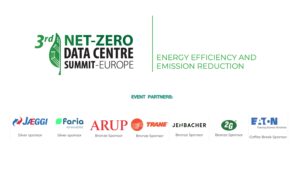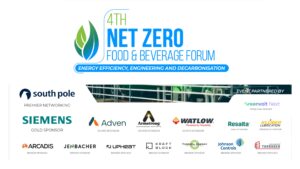Companies encounter the most demanding aspect of corporate carbon accounting during Scope 3 assessments. These assessments require tracking all emissions in their value chain. The calculation of Scope 3 emissions requires data aggregation from various sources. It leads to differing data precision and transparency levels. Businesses experience challenges with their data being insufficient or differing throughout their records. So, this results in difficulties in developing appropriate reduction plans. Addressing these gaps becomes essential because accurate scope 3 accounting depends on it and investors are scrutinizing business climate actions.
A structured method enables organizations to guarantee reliable sustainability data and helps them create sound decisions. This article reviews Scope 3 data collection problems and how to address data gaps in Scope 3 emissions reporting. This is to assist organizations in expressing and decreasing environmental impact through better Scope 3 accounting systems.
Scope 3 Accounting: Standardizing Data Collection for Improved Accuracy
Data inconsistencies represent one of the main obstacles in carrying out Scope 3 accounting. Without standardized collection procedures suppliers and business units find it difficult to combine and contrast their emissions data. Standardization is detailed as a method for organizations to enhance data reliability within this section:
Creating a Unified Data Framework
Standardized data collection methods protect organizations from various problems that occur when data emission reports lose consistency. Global standards such as the GHG Protocol and CDP framework need to form the basis of the standardized data collection methodologies companies need to deploy. The framework needs to detail what information to report combined with scheduling requirements as well as established reporting protocols. The implementation of programmed systems for data collection integration in procurement and logistics operations leads to precise data reporting and fewer manual human errors. Standardization also enables companies to have efficient carbon emissions tracking throughout their supply networks. This improves reporting processes and compliance practices.
Leveraging Industry Benchmarks and Databases
Current industry benchmarks together with emission factor databases help organizations deal with their problems in collecting supplier-specific emissions information. Multiple tools including EcoInvent, DEFRA along with the GLEC framework offer businesses estimated information about industry and activity-based emissions. These databases enable companies to use reliable data estimates to fill data gaps. This is until they create systems for direct supplier reporting. The long-term goal for businesses should be obtaining primary supplier data since it boosts data accuracy. Through this combined method, organizations achieve sustainability knowledge for their decision-making routines. That too without delaying their sustainability reporting procedures.
Implementing a Data Verification Process
Data accuracy and reliability need multiple verification checkpoints to establish proper implementation. Three systematic reporting elements need to be developed by organizations. It includes internal audits as well as third-party verification and automated anomaly detection systems along with their internal reporting processes. The internal verification process compares the reported emission data with operational records from fuel and energy usage statistics. Furthermore, external verification organizations use separate evaluation procedures to establish the credibility of tracked figures. Automated validation systems help further in improving accuracy through the detection of inconsistent data. This prompts potential errors to be marked in emissions computation procedures. Through an extensive verification procedure, organizations create stakeholder trust and fulfill current as well as future regulatory requirements.
Integrating Third-Party Data Sources
The integration of environmental consultancies and sustainability platforms enables organizations to access supplementary data when they need to report emissions from their suppliers. External sources in the industry obtain and combine industrial emissions data to provide businesses with insights concerning various sectors. The existing sustainability reporting systems of businesses can incorporate third-party data sources which both complete information gaps and lead to direct supplier involvement. The analysis of peer performances through third-party sources enables organizations to discover emission reduction possibilities alongside operational enhancement opportunities within their sector. This is one of the best practices for improving Scope 3 carbon accounting accuracy.
Scope 3 Accounting: Enhancing Supplier Collaboration for Better Data Access
The meaningful collaboration between suppliers remains vital to obtaining correct information regarding Scope 3 emissions contribution. The following part presents methods that help achieve better data transparency while engaging suppliers effectively in scope 3 accounting:
Strengthening Data Governance in Supply Chains
Data governance standards create a framework that maintains supply chain emissions data quality, and consistency and makes it operational for decision-making. Companies must develop detailed policies that outline the whole process of gathering emissions data, ensuring its verification, and its purpose in business choices. Implementing business teams specialized in sustainability will help ensure supplier data compliance and precision. Through scheduled audits and evaluations by third parties companies can verify that their emission reports uphold industrial standards and corporate environmental targets.
Providing Training and Capacity-Building Support
Most suppliers lack adequate technical expertise and appropriate knowledge to perform accurate emissions monitoring and reporting tasks. Companies need to organize specific training sessions that help suppliers understand emission calculation procedures. This is along with sustainability software applications and regulatory needs. Webinars and on-site workshops together with interactive e-learning modules can provide suppliers with the required skills. Companies that support their suppliers through the provision of reporting templates along with process instructions simplify the data submission process. A committed supplier network trains staff to provide high-quality reports and shortens the time needed to achieve scope 3 decarbonization goals.
Incentivizing Suppliers for Transparency
Suppliers need more than mandatory procedures to contribute to emissions reporting. They require substantial company-provided incentives. A company should provide financial rewards and improved reputation recognition to suppliers who display transparent sustainability practices. Employees respond positively to specific contract terms together with public acknowledgment and membership in sustainability assistance initiatives. Additionally, sustainability-based procurement scorecards used for supplier selection offer transparency. The combination of corporate-wide accountability structures with recognition programs produces the capability to conduct supply chain emissions reporting across the entire organization.
Establishing Collaborative Reporting Platforms
Companies need to build digital networks that function as common entry points for supplier data entry optimization. These platforms help in submitting electronic data, getting automatic validation, and getting instant feedback systems. Corporations benefit from supply chain management tools. These enable continuous monitoring of supplier performance related to emissions over multiple periods. Collaborative reporting systems also create better supplier participation because they show emission patterns and successful techniques. A digital reporting system helps businesses develop in-depth operating systems that benefit suppliers and organizations jointly.
Utilizing Digital Solutions for Scope 3 Accounting
Technology is critical in managing the collection process, analysis, and verification processes for emission data. The following part investigates digital solutions that enable companies to improve their Scope 3 accounting capabilities while closing existing data gaps:
Adopting Automated Data Collection Platforms
The traditional system of carbon emissions tracking through manual methods leads to several avoidable mistakes as well as performance problems. Modern carbon management platforms such as SAP Sustainability Control Tower and Salesforce Net Zero Cloud track corporate greenhouse gases by linking with existing procurement systems as well as operational solutions. These platforms enable businesses to track emissions in real-time which erases data errors for better reporting accuracy. The automated collection of data enables better scalability so companies can track Scope 3 emissions effectively in large supplier networks. Companies that invest resources into digital automation systems make their emissions reporting both more efficient and more reliable.
Leveraging Blockchain for Data Integrity
Supplier-reported emission data benefits from blockchain technology which develops an auditable tamper-resistant record system. The blockchain system creates an unalterable transaction log. This establishes transparency in the process while reducing possible manipulated emissions data. Businesses implement blockchain to follow emissions at each supply chain stage. This creates trusted relationships between their stakeholders. The automated compliance verification process becomes more streamlined due to blockchain-based smart contracts that operate in the system. The technology becomes exceptionally beneficial for businesses in regulated sectors that need absolute data integrity.
Integrating AI and Machine Learning for Data Analysis
The use of AI-powered analytics provides organizations with a sophisticated system to handle large volumes of emissions data. ML algorithms find unusual reporting patterns in data and calculate missing data points. This is while creating future emission prediction models. Through AI-driven scenario analysis, companies gain the ability to predict the sustainability initiative outcomes before beginning actual implementation. Moreover, with AI-enabled insights, organizations gain better resolution of their decarbonization approaches by detecting points of high-intensity emissions. Companies benefit from AI technology which helps them develop optimized Scope 3 accounting operations to speed up sustainability initiatives.
Deploying IoT for Real-Time Emissions Monitoring
The implementation of IoT technology allows organizations to monitor emissions functions in real time because they install sensors throughout their production areas, logistics systems, and transportation fleets. These sensors detect primary emission signs including fuel efficiency and waste levels to deliver current operational efficiency information. Companies can accurately perform carbon emissions tracking through their platforms by integrating IoT data which enables them to effectively prevent elevated emission activities. The monitoring system based on IoT enables regulatory compliance by maintaining continuous collection and verification of data.
To Sum Up
To address Scope 3 accounting data gaps, companies should use standardized collection methods together with supplier relationships in addition to digital solutions. A single standardized approach holds the potential to achieve uniformity and supplier partnerships enable better observation of data sources. A combination of digital tools that include automated platforms alongside blockchain technology and AI-driven analytics systems alongside IoT-driven monitoring helps streamline emissions tracking and reporting operations as well.
If you want to explore these solutions in more depth and gain rare insights, make sure to join the 3rd Annual Scope 3 Summit in Berlin, Germany on March 13-14, 2025. The leading conference gathers sustainability experts, regulators, and corporate executives to exchange knowledge and experiences about Scope 3 accounting practices alongside data management approaches and supplier partnership models. So, register now!



